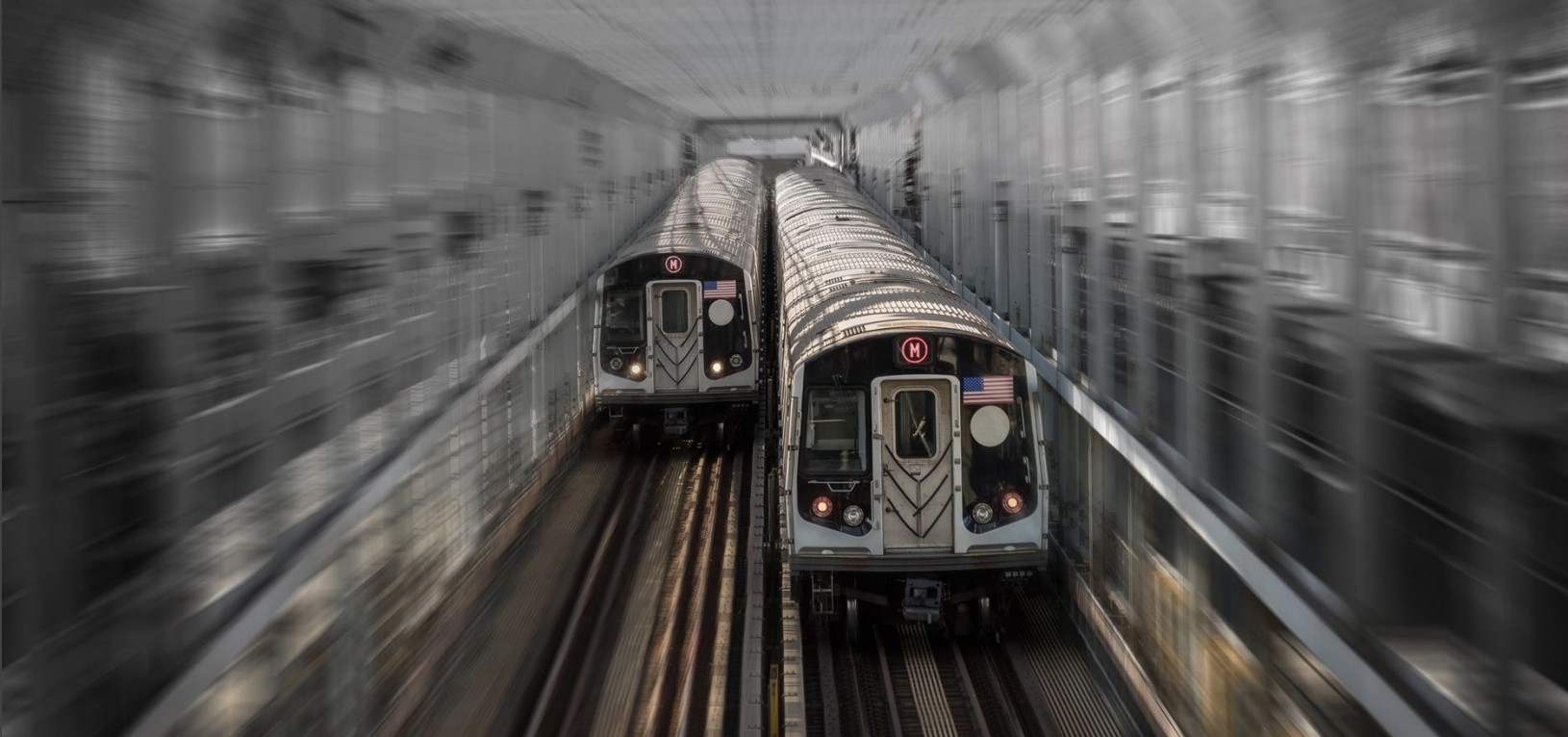
This post was written by Yonah Freemark and Lindiwe Rennert of the Urban Institute.
The COVID-19 pandemic threatened the ability of public transportation providers throughout the United States to offer the comprehensive service millions of people rely upon every day. Though the federal government provided aid that prevented massive cuts during the pandemic’s first two years, many transit agencies are now facing a fiscal cliff because that funding is coming to an end and ridership has failed to fully return to prepandemic levels in most places, limiting fare revenues. For many agencies, this cliff is only the latest challenge to emerge from decades of unstable, varying funding levels .
We are the co-authors of Urban Institute’s latest report, “Surmounting the Fiscal Cliff,” which seeks to understand why transit agencies—unlike many other public services—continuously face these unsteady conditions. We combine an exploration of transit funding data at the national level with case studies of systems in five US metropolitan areas, and evaluate how other public services, including libraries, parks, and fire departments, are maintaining adequate funding over time.
We find that agencies that previously raised much of their revenues from passenger fare collection face an uncertain future as ridership continues to recover slowly postpandemic, partly because policymakers have not assembled an adequate set of diverse funding sources for transit. Most agencies rely on just one major external source of local revenue—usually sales taxes, notable for their instability—exposing agencies to varying levels of funding as local economies shift over time. This variation forces agencies to cut service—leading, in turn, to steadily declining transit ridership. This cycle leads to more automobile traffic on the roads, higher greenhouse gas emissions in the air, and less freedom of mobility for people with the fewest resources.
The Vicious Cycle for Transit Agencies

Transit agencies, however, can work with policymakers at the federal, state, and local levels to ensure agencies not only achieve financial stability but also secure the ability to expand service to meet the needs of a growing population that requires access to the equitable, environmentally supportive travel option that transit provides. With new funding, agencies can offer ever better service and carry more riders while preventing future fiscal cliffs. In our research, we find that, already, several US agencies are moving more passengers than they did prepandemic, and dozens of individual routes run by other agencies are doing so as well. This can produce a virtuous cycle for transit agencies.
The Virtuous Cycle for Transit Agencies

Using examples from the case-study cities of Washington, DC, San Francisco, Denver, Cincinnati, and San Antonio, we show how political officials have identified sustainable, long-term revenue models for other types of services that enable them to offer consistent service.
We conclude with several key recommendations. Local and state leaders can support transit agencies through these actions:
- Leverage highway funding. The federal government allocates billions of dollars each year to state governments to spend on transportation. Most states concentrate this funding on roads, even though several programs allow them to use funds for transit projects. Moreover, federal rules allow many highway-only funds to be “flexed” to transit programs. States should work to convert these funds into support for transit capital investment—while shifting local and state funds to transit operations, growing the pot of accessible revenue.
- Develop a diverse and more stable set of external subsidies for transit, ensuring that agencies collect revenues from more than one major source. Though sales taxes are the most common source of transit agency revenue, other sources, such as property taxes, income taxes on high-income individuals, and charges on driving, should be considered for additional support. There is added benefit in the fact that these funding options are less regressive than sales taxes.
Transit agencies themselves can take these actions:
- Identify ways to increase transit service to encourage additional ridership. Though more ridership is unlikely to generate substantial fare revenue increases in the short term, it can help build political support for more investment in transit using other
- Increase operational efficiency, not by reducing workforce or service, but by investing in improvements that speed operations and reduce energy costs, such as by dedicated bus lanes.
- Create a rainy-day fund. Agencies should respond to year-by-year variations in tax revenue by creating resources they can pull from when funds come in lower than expected. This type of fund is routinely used by state governments to improve their fiscal stability—and it can help transit agencies achieve a balanced budget.
These changes will require a concerted push by transit agencies and support from local and state governments, which ultimately make the key choices about what sorts of revenues transit agencies have access to. Advocates and organizers can play a key role in building this political support, and researchers can provide evidence that speaks to this moment of great need. More stable, diversified funding, combined with thoughtful approaches to service, can indeed allow agencies to surmount this fiscal cliff while enabling them to expand service into the future and better preparing them to face—or allowing them to avoid—future emergencies.
 On the Brink: Will WMATA’s Progress Be Erased by 2024?
On the Brink: Will WMATA’s Progress Be Erased by 2024?
The experience of being a WMATA rider has substantially improved over the last 18 months, thanks to changes the agency has made like adding off-peak service and simplifying fares. Things are about to get even better with the launch of all-door boarding later this fall, overnight bus service on some lines starting in December, and an ambitious plan to redesign the Metrobus network. But all of this could go away by July 1, 2024.
Read More The Gas Tax’s Looming Insolvency is a Big Opportunity to Rethink How We Fund Transit
The Gas Tax’s Looming Insolvency is a Big Opportunity to Rethink How We Fund Transit
Two new reports investigate funding alternatives.
Read More